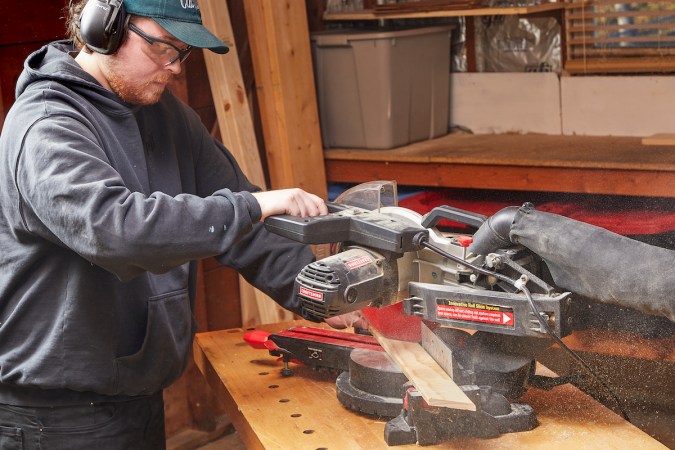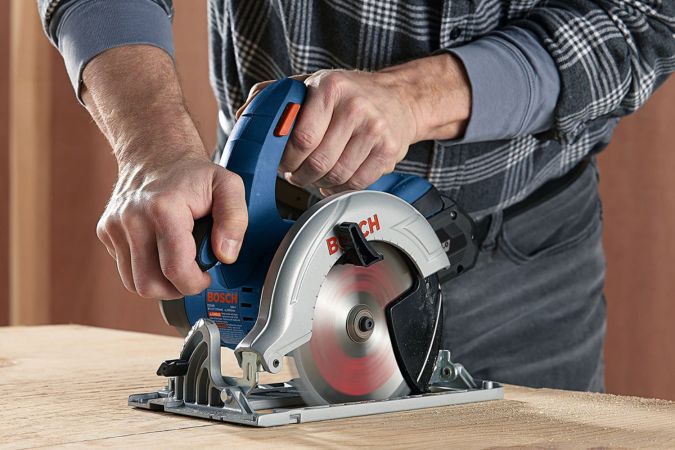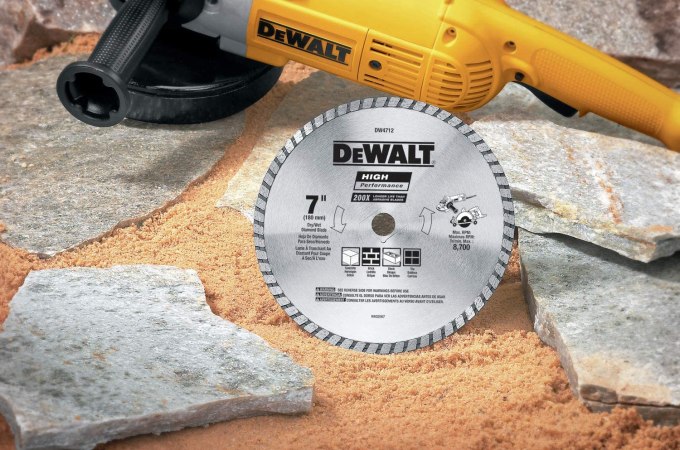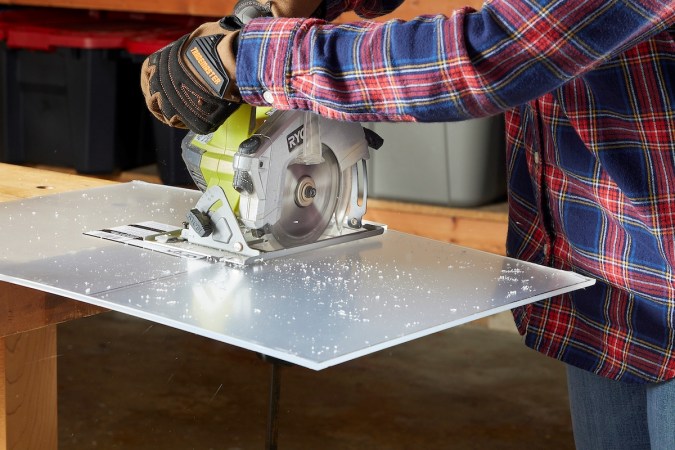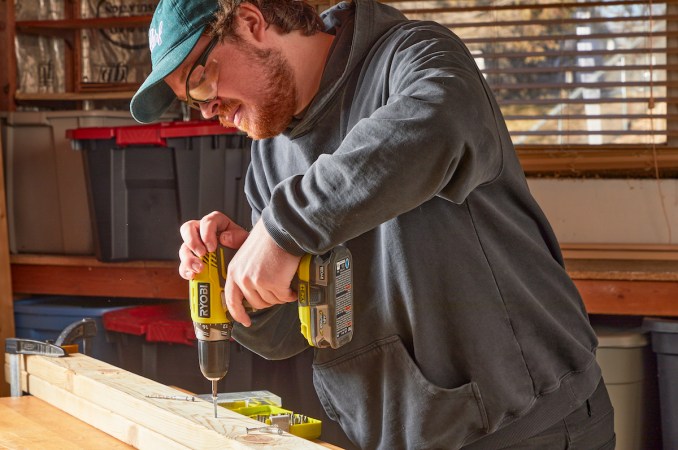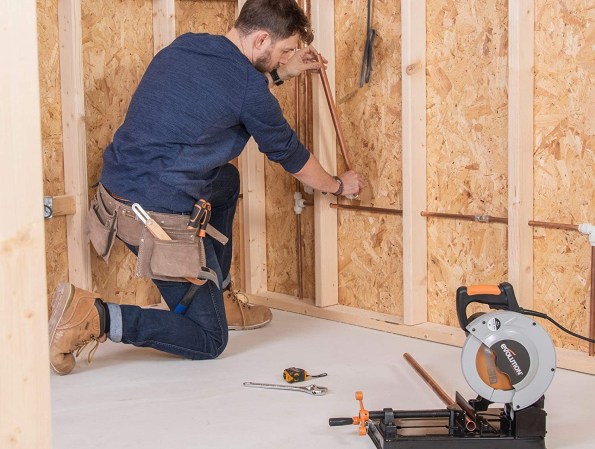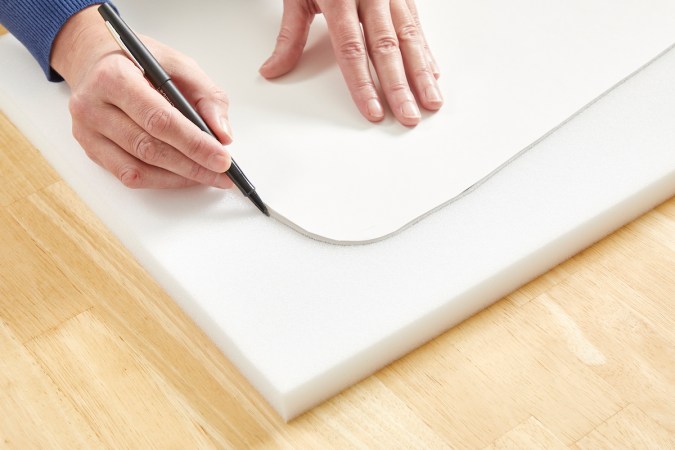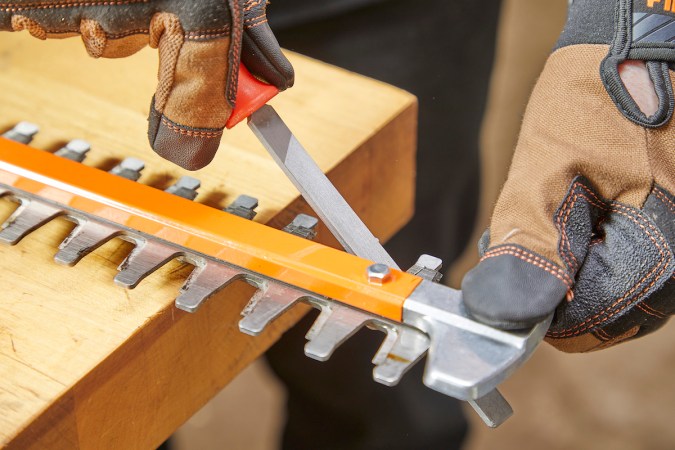We may earn revenue from the products available on this page and participate in affiliate programs. Learn More ›
DIYers have a wide variety of cutting tools available to them, but few are as convenient and versatile as the circular saw. This power tool features an electric motor that spins a round blade at high speeds, enabling users to cut through dense lumber, plywood, and other materials in seconds.
They’re fast, efficient, and accurate, and any DIYer can learn how to use a circular saw with some tips and practice. The following will teach you everything you need to know about this useful tool.
Parts of a Circular Saw
Before handling a circular saw for the first time, it’s important to get familiar with some of the individual parts.
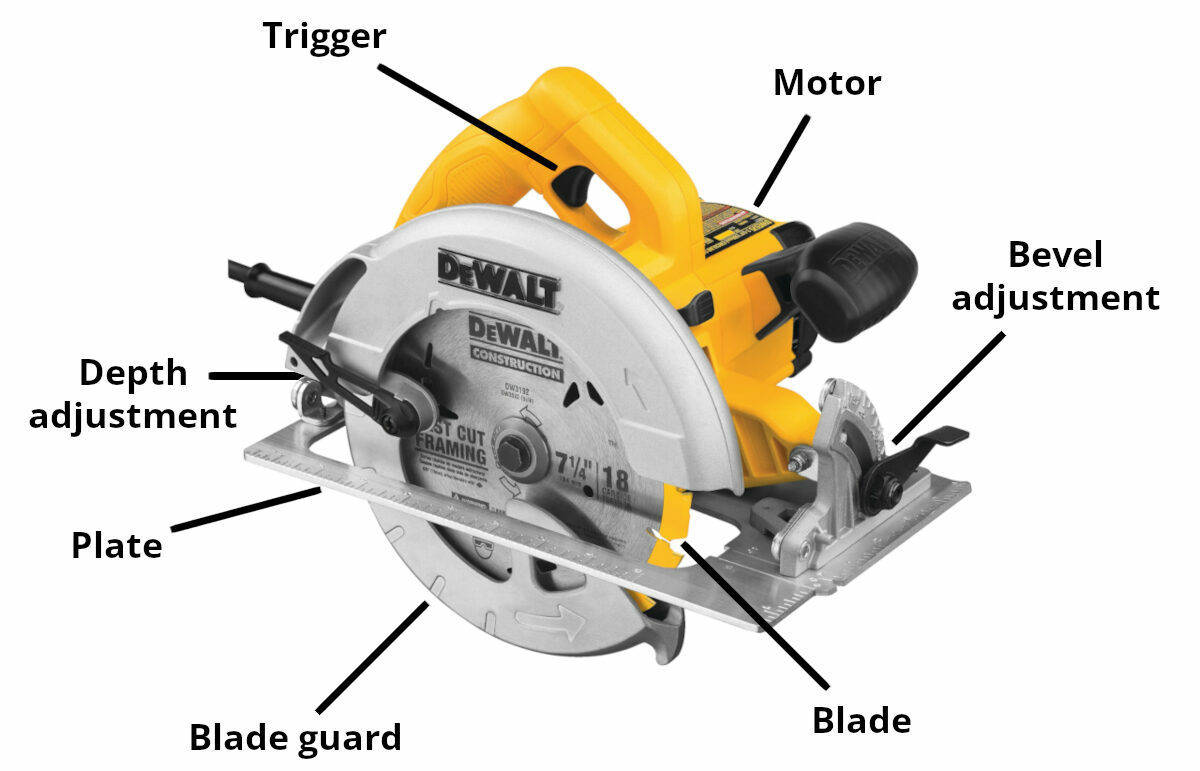
- Motor: Inside the plastic and metal housing is an electric motor. While today’s brushless circular saw models require very little maintenance, it’s helpful to understand this part and know that circular saws are available in various motor configurations.
- Blade: Circular saw blades are round and have many sharp teeth. The motor spins these blades quickly, and the blade cuts with upward strokes at the front of the blade.
- Blade guard: That spinning blade can do a lot of damage very quickly, whether to a surface that comes in contact with the spinning blade or the user. To keep a spinning blade from accidentally cutting someone or marring an object, the spring-loaded retractable blade guard slides over the blade. When cutting, it should automatically retract.
- Trigger: This part turns the saw on and off. Circular saws don’t have adjustable speeds or pressure-sensitive triggers, so clicking this part will ramp the blade up to speed immediately.
- Safety: Some circular saws have thumb-activated safety switches that prevent the user from accidentally starting the saw.
- Plate: The plate, or shoe, is the part of the saw that rides on the material. They’re typically aluminum, steel, or die cast, and their angles can be adjusted to cut bevels.
- Bevel adjustment: Found at the front or back of the saw (depending on the model), the bevel adjustment allows you to change the angle of the plate relative to the saw blade. These are typically knobs or levers. While they’re not precisely accurate, they’re more than accurate enough for framing.
- Depth adjustment: A circular saw’s blade is adjustable to different depths, allowing users to score surfaces before cutting, remove materials for a mortise, or cut straight through thicker lumber. The depth adjustment is typically a lever and found at the rear of the circular saw.
4 Types of Circular Saws to Know
As is the case with most power tools, there are different types of circular saws available. While they all serve the same general purpose, each type has its strengths and weaknesses.
1. Sidewinder Circular Saw
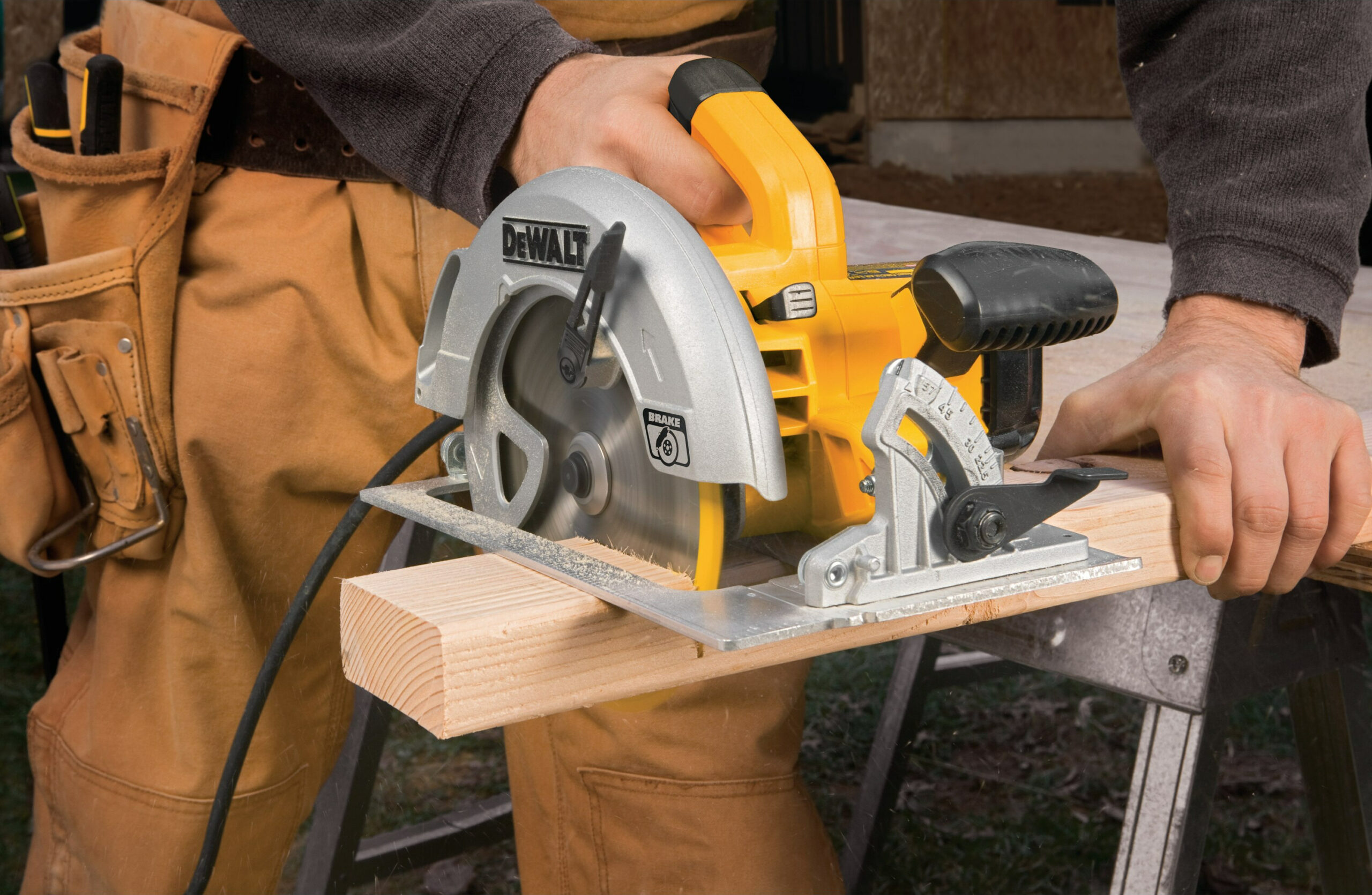
Sidewinder circular saws have electric motors mounted inline with the blade, and the blade essentially mounts to the output shaft of the motor. They’re compact and lightweight compared to worm drive models, and the blades spin at very high speeds. These saws are very low maintenance and easy to wield, but they aren’t as torquey as a worm drive. And, as far as cordless circular saws go, they’re predominantly sidewinders.
Our Recommendation: DEWALT 7 1/4-Inch Circular Saw at The Home Depot for $159
Dewalt’s 7 1/4-inch circular saw has a low-maintenance sidewinder design with plenty of adjustability, as well as features like onboard wrench storage and a built-in dust blower.
2. Worm Drive Circular Saw
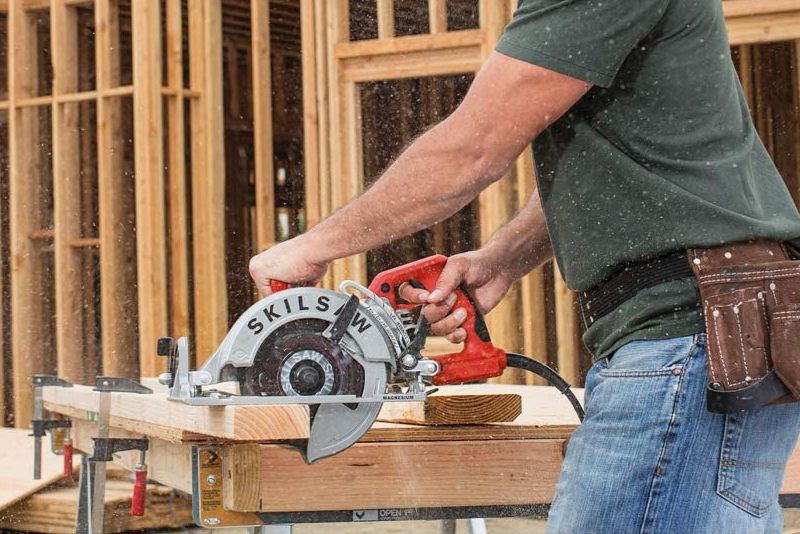
When it comes to cutting through thick lumber and timbers such as 4x4s, 6x6s, and the like, a worm drive circular saw is the way to go. These saws have motors mounted inline with the handle, as well as a set of gears that connect to the blade. This increases torque tremendously, but also increases size and weight. These saws often have maintenance requirements as well, requiring regular oiling and cleaning to preserve performance.
Our Recommendation: Skilsaw 7 1/4-inch Worm Drive Circular Saw on Amazon for $159
Skilsaw’s 7 1/4-inch worm drive circular saw is the gold standard in worm drives, with plenty of torque, lightweight magnesium parts, and tons of adjustability not found in other models.
3. Compact Circular Saw
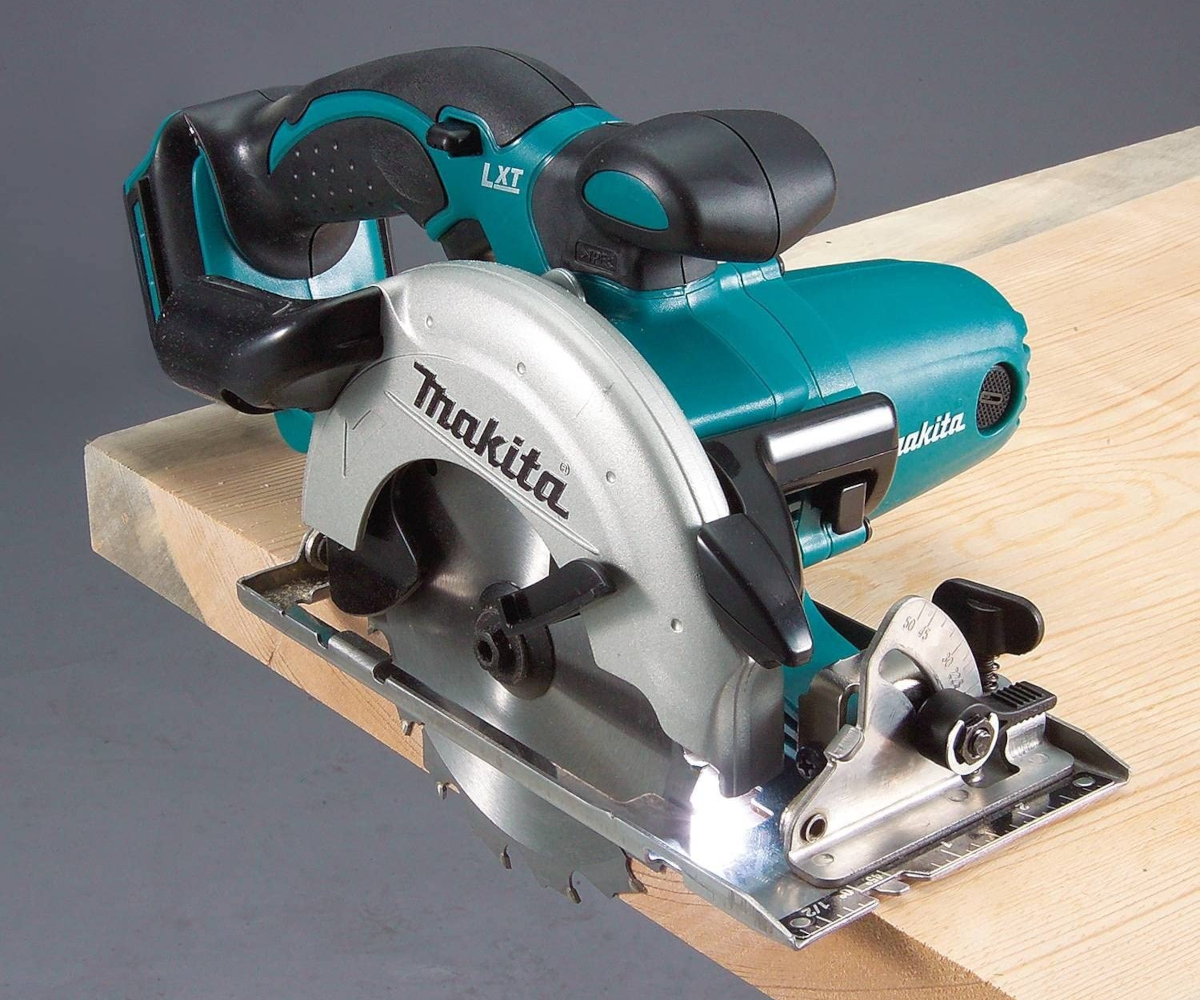
Sometimes, a full-size saw isn’t necessary and can actually make a job more challenging. In those cases, a compact circular saw might fit the bill. These saws have blades that range between 4 inches and 5-3/8 inches. They’re also mostly made of polymer plastics, which keeps them lightweight but durable.
Our Recommendation: Makita 18V LXT Cordless Circular Saw on Amazon for $213
Makita’s XSS03Z 18V LXT compact circular saw weighs just 6 pounds (with the battery!) and delivers up to 3,600 rpm, allowing it to handle tough materials with its 5-3/8-inch blade.
4. Track Saw
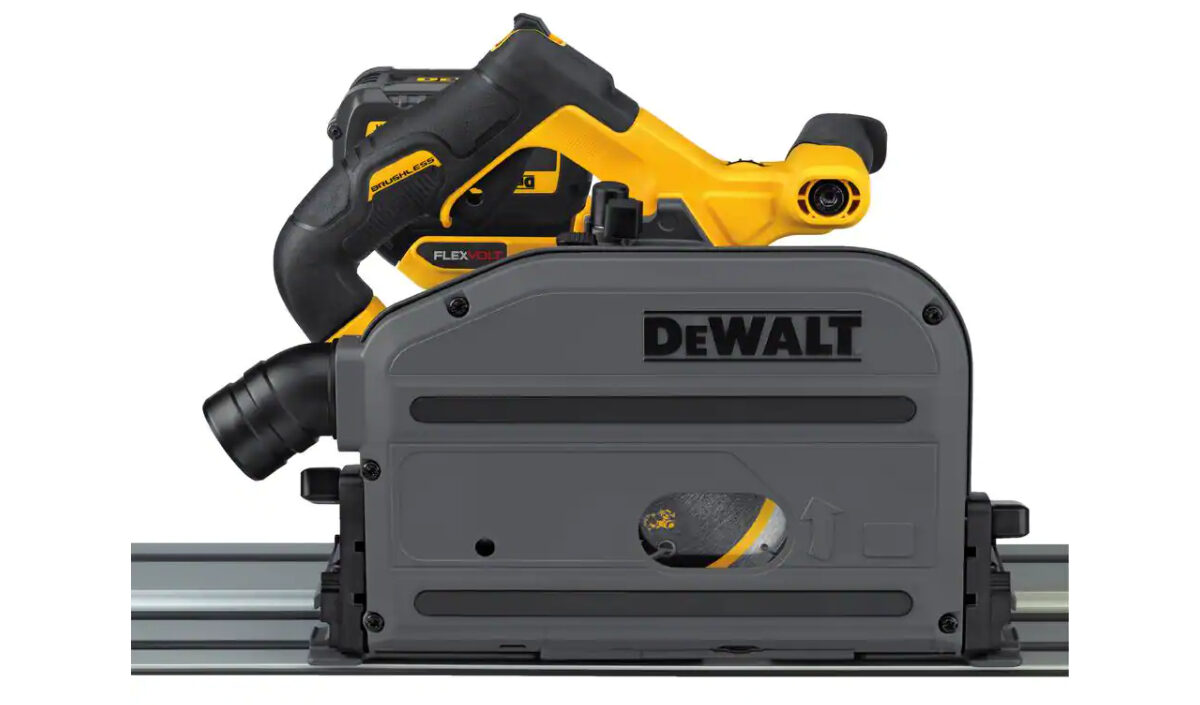
Cutting perfectly straight is achievable with a standard circular saw, but a track saw helps expedite the process and reduces room for error. These saws have long track guides that lay on or clamp to the material, and the saw rides in those tracks. This produces straight cuts that are quick and easy to lay out.
Though these saws are rarely capable of cutting as deep as a standard circular saw, many can cut bevels with more accuracy. Inexplicably, most saws don’t come with tracks, so they’ll need to be a separate purchase.
Our Recommendation: DEWALT Cordless Track Saw at The Home Depot for $529
Dewalt’s Track Saw kit features a 6-1/2-inch blade, adjustable depths of cut, 45-degree bevels, and a powerful 12-amp motor.
Circular Saw Safety Tips
Circular saws are convenient and can be very safe when used properly. But it might feel a bit intimidating to learn how to use a circular saw for beginners. The following tips can help.
- Circular saws are very loud and can send chips of wood flying. It’s important to wear the proper PPE, including hearing protection and safety glasses. Also, do not wear loose-fitting clothing when operating one.
- When using a circular saw, be sure that there is nothing underneath the saw that the blade will accidentally contact, including the work surface, any tools underneath, or the power cord when using corded circular saws.
- Never remove the blade guard. If the blade guard prevents the cut (such as when plunge cutting or cutting at a severe angle), simply lift the guard with its handle before starting the blade. Release the guard when done.
- Always hold onto the saw until the blade stops completely. Letting go while the blade is still spinning can result in the saw blade camming up and kicking back at the user.
- A sharp blade is a safe blade. Dull blades covered in pitch from framing lumber make cutting more difficult, require more effort, and make cutting more dangerous. Sharp blades will pass through the material with ease.
- Unplug the saw or remove its battery before adjusting the blade depth or bevel angle.
- Always inspect the saw before use. Check the cord, plug, trigger, safety switch, and guard for operation. Also, ensure that the blade is securely tightened in place (with the saw unplugged or battery removed).
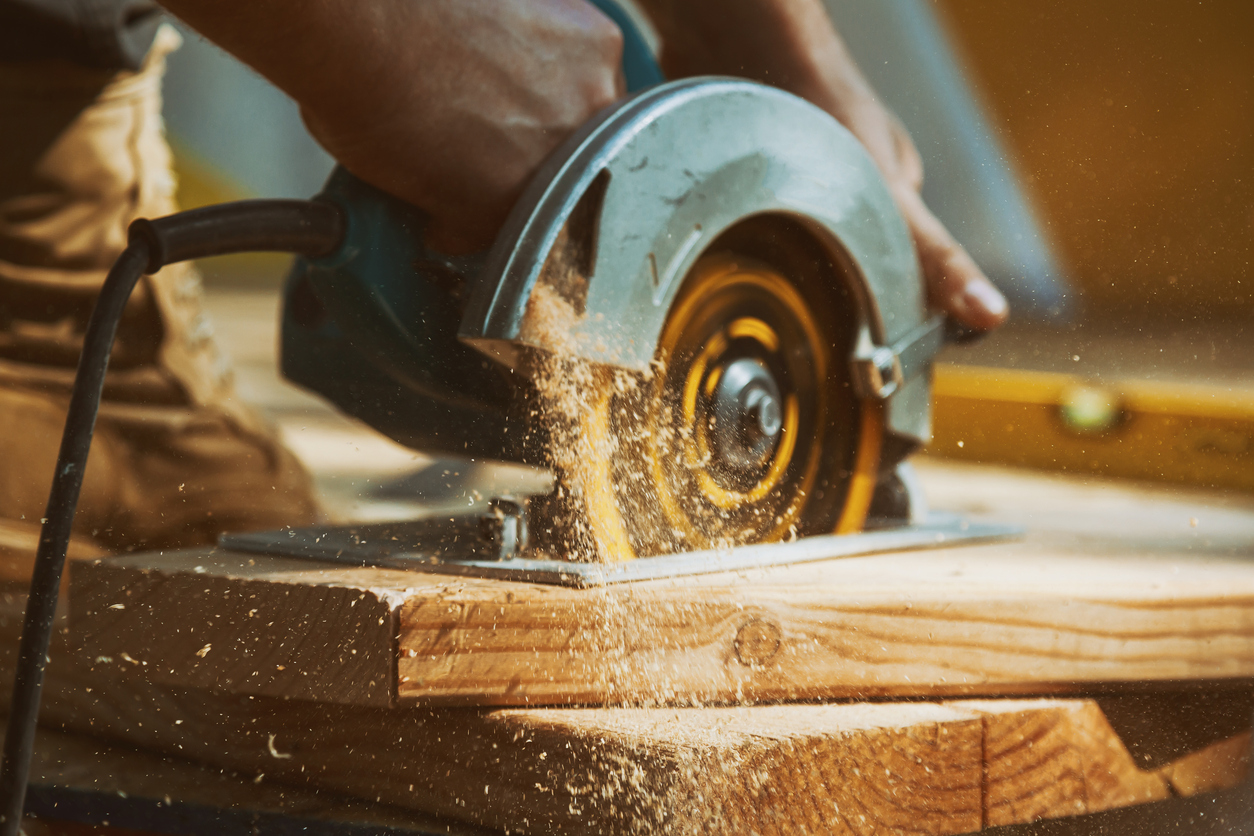
Circular Saw Setup and Calibration
Circular saws are generally easy to set up and use, but there are a few things to know before using one. First, place the saw on top of the material being cut so the blade is hanging off the edge and the plate is flat against the surface. Loosen the depth adjustment, adjust the blade depth so it’s around 1/4 inch deeper than the material’s thickness, and lock the depth lever back down.
For square cuts, it’s important to ensure the blade is set at a true 90 degrees. Unplug the saw or remove its battery and turn it over. Slide the blade guard out of the way and place a speed square or framing square against the blade and the bottom of the plate. If this doesn’t result in a perfect fit, loosen the bevel adjustments and maneuver the plate into place until it is.
How to Use a Circular Saw for Cross Cuts
When it comes to what a circular saw is used for, the most common answer is cross-cutting, such as cutting framing lumber to length (across the grain). Doing so is fairly easy and safe for those who know how to use a saw like this. Here’s one method.
Step 1: Mark the board to length with a framing square.
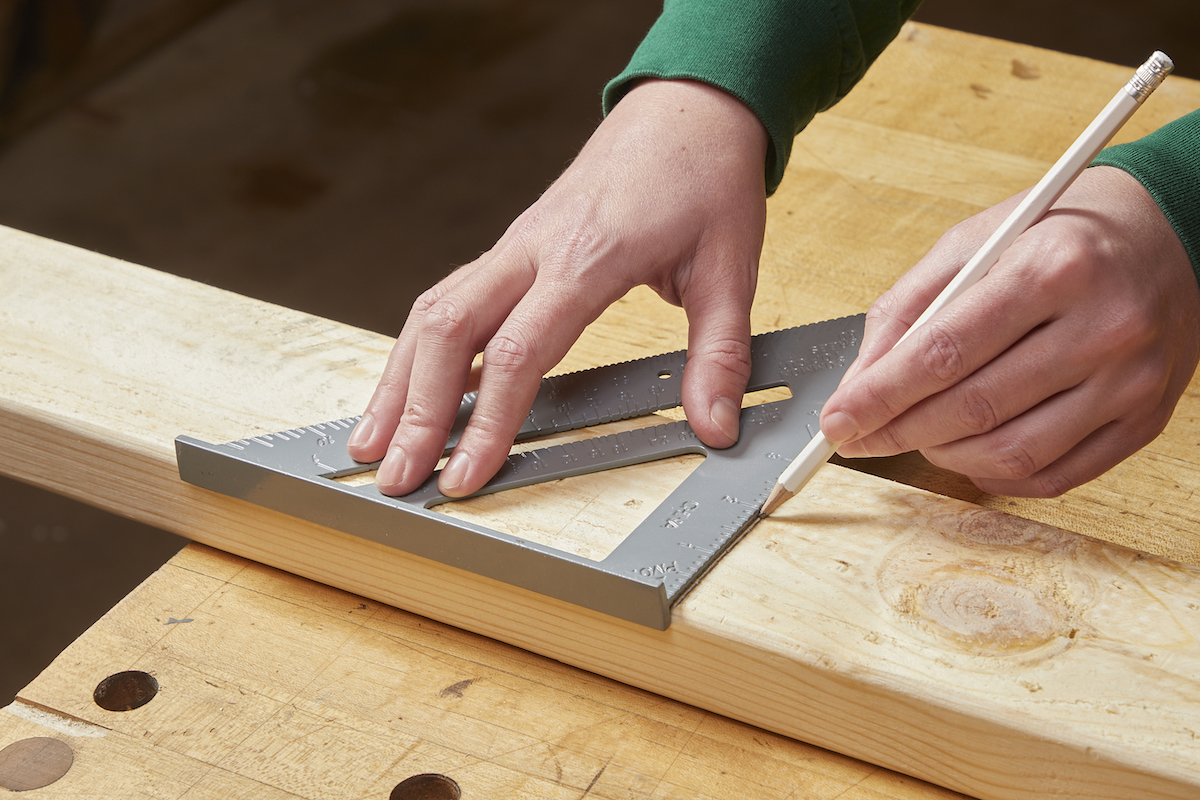
Circular saws don’t cut square automatically like a miter saw, so it’s important to mark the board with an accurate line to follow. Make a mark at the desired cut location and lay a framing square at the mark. Draw a dark straight line at the mark and double check it for accuracy.
Pro tip: If cross-cutting reclaimed wood, check for any nails or screws that might be in the way to prevent blade damage.
Step 2: Place and secure the board to the work surface.
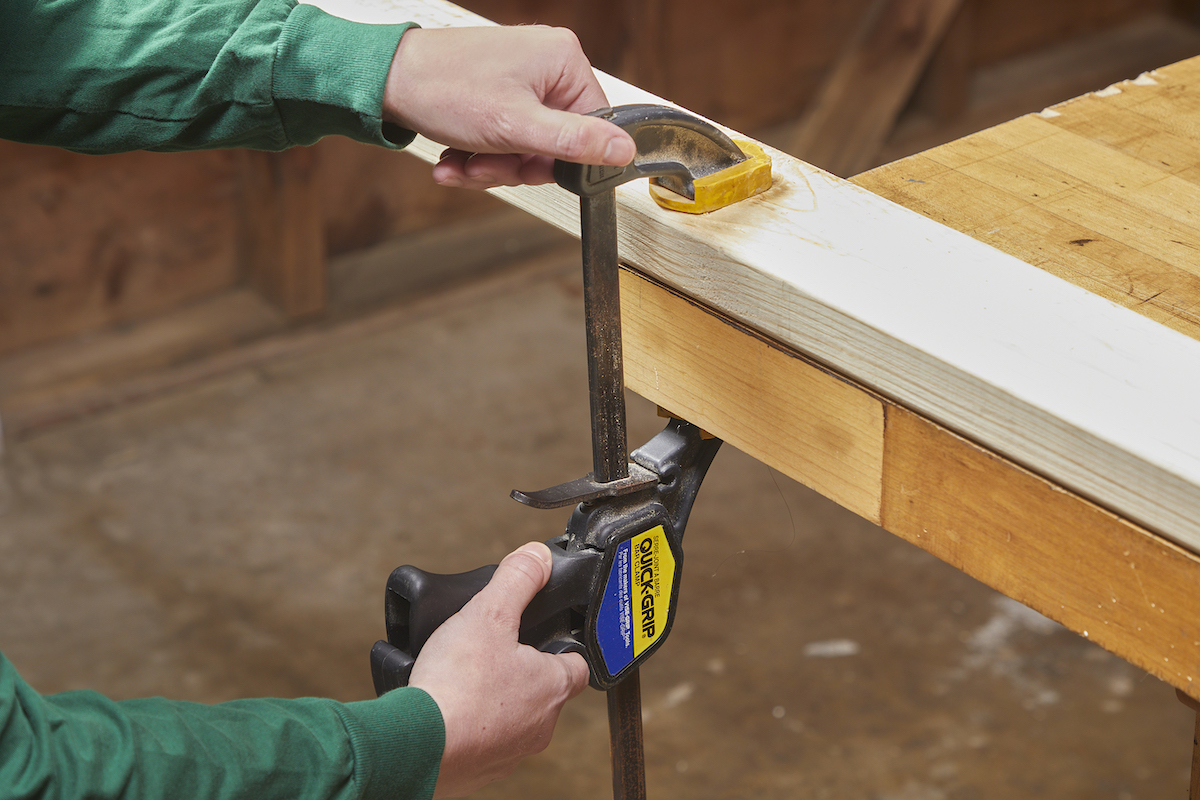
A sturdy work surface is a necessity, but it doesn’t have to be fancy. A truck bed, two sawhorses, or even a lumber pile make fine surfaces, as long as there isn’t a chance of accidentally cutting into something other than the wood you’re working with.
Provide enough room to stand on the longer side of the board as this will provide the most leverage for holding the board in place while cutting. Use your free hand to hold the board against the work surface with downward pressure. For increased stability, use woodworking clamps to attach the board to the work surface.
Step 3: Cut the board.
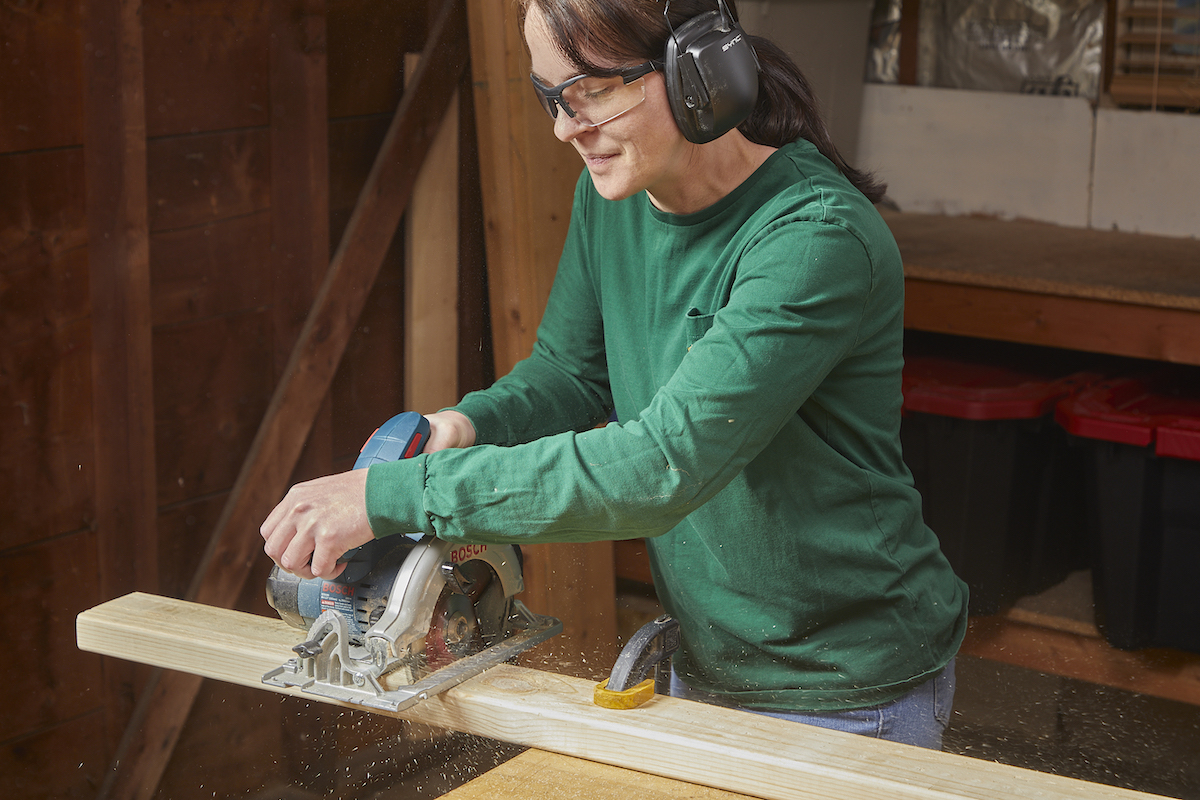
Without starting the saw, place the front of the plate on top of the board and touch the cut line with the blade. Back the blade up slightly, press the safety switch, and squeeze the trigger.
Watching the front of the blade, guide the saw through the cutline. Be careful not to put sideways pressure on the blade or else the cut may end up crooked. Allow the scrap lumber to fall to the ground after cutting, and allow the blade to come to a stop before placing the saw down carefully.
How to Use a Circular Saw for Rip Cuts
Rip cuts can be tricky with a circular saw (especially without a track), but they’re certainly doable. Here’s how to cut with a circular saw down the length of a board (ripping):
Step 1: Create a flat stable work surface.
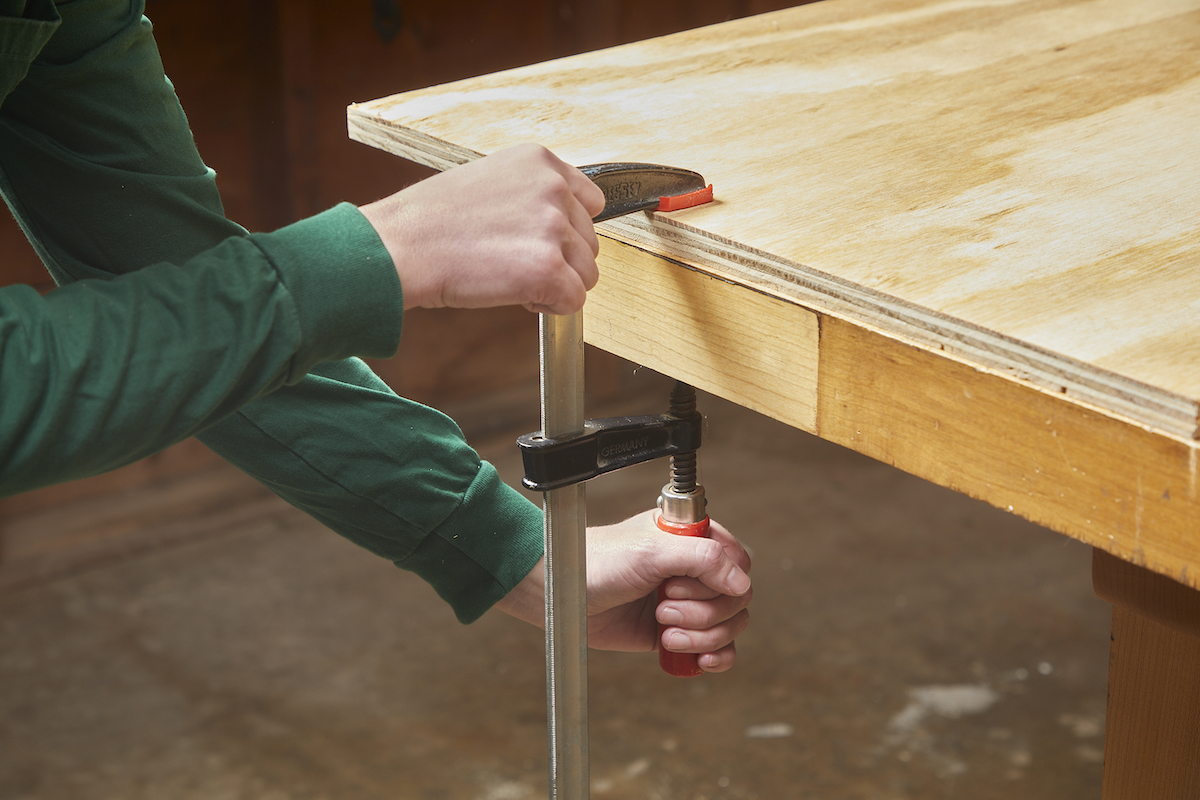
Ripping wood can be very awkward, so this is another scenario where the work surface is important. For ripping, a series of sacrificial 2x4s laid across a flat driveway works just fine, as do wooden sawhorses with sacrificial tops. Just be sure that the saw isn’t going to accidentally cut something that matters.
Step 2: Mark the board accurately.
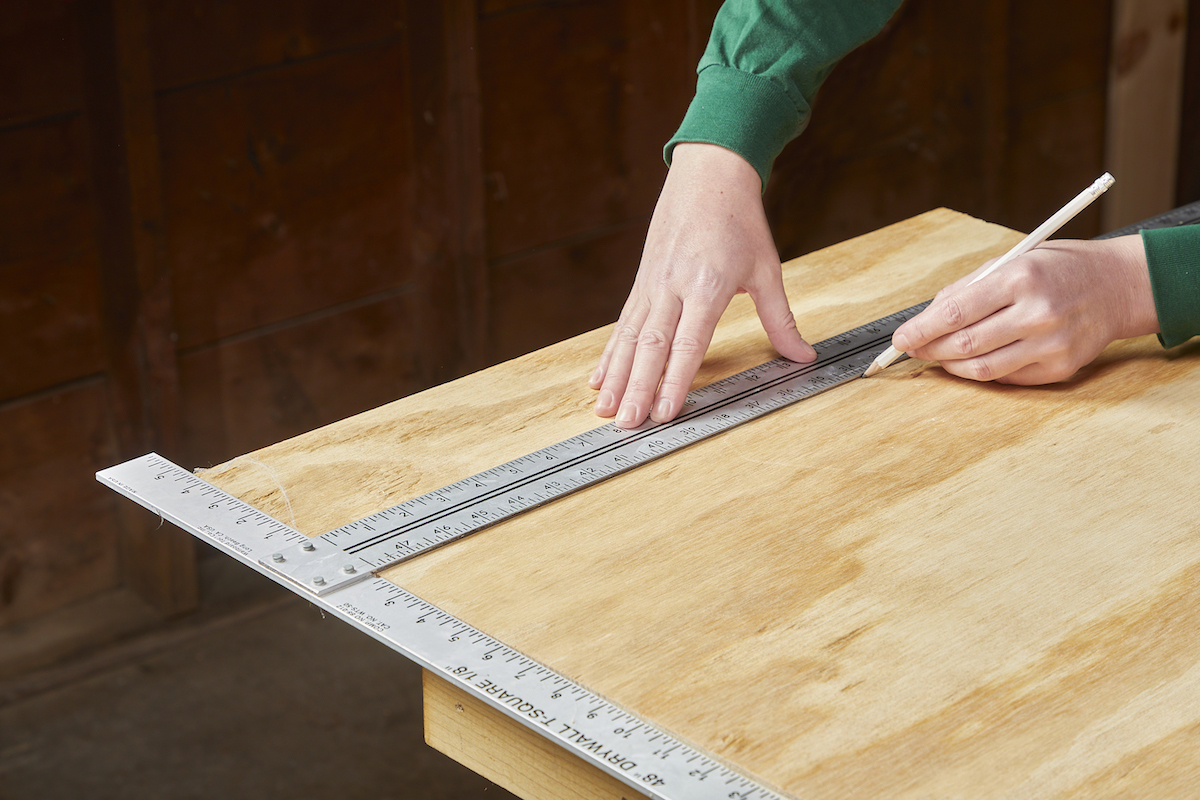
Whether ripping a piece of lumber or a sheet of plywood, the marks need to be accurate. In many cases, the easiest way to accomplish this is by marking the board at either end, stretching a chalk line between the marks, and snapping a line on the surface. Otherwise, a combination square, T-square, level, or a straight edge clamp can do the trick.
Step 3: Line up the saw and start cutting.
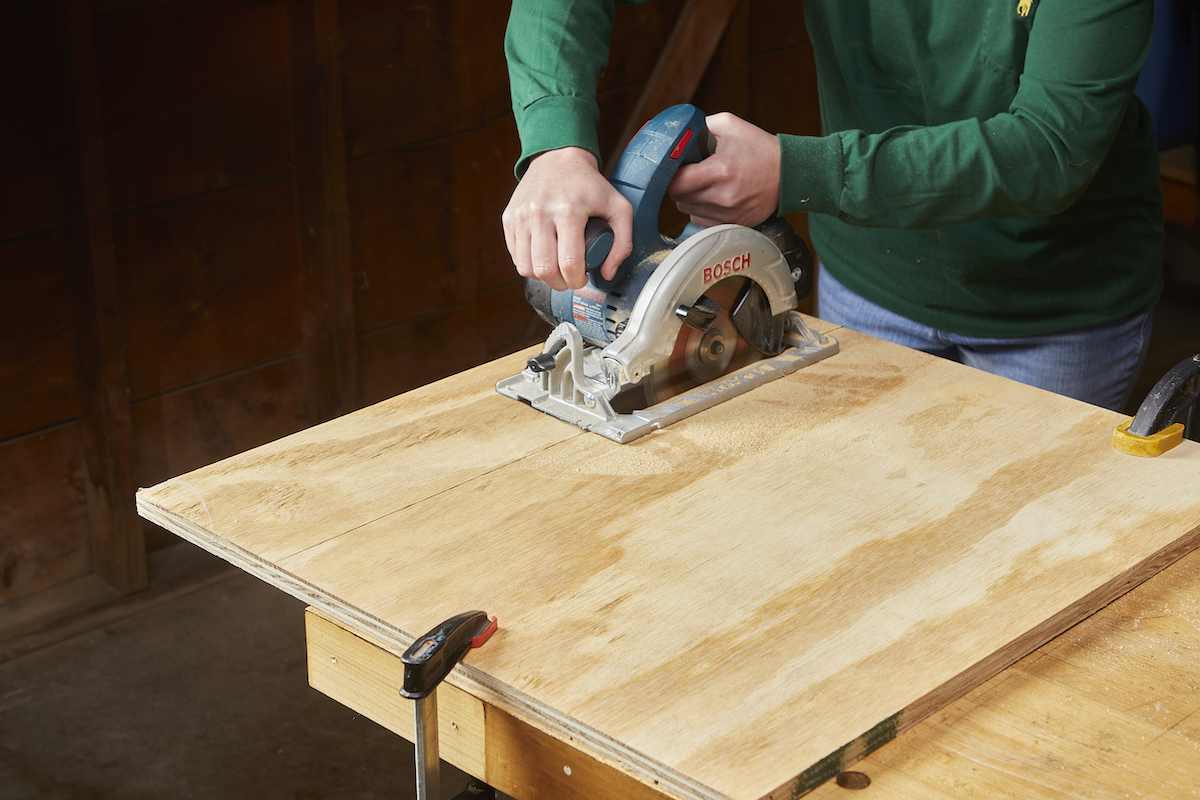
Place the front of the plate on the board and line the blade up with the mark. Back the blade up slightly, press the safety switch, and squeeze the trigger. Carefully guide the blade down the cut, watching the front of the blade to make sure it stays on the line. Guide the saw as far as safely possible before adjusting your position.
Step 4: Adjust your position as you go.
For long rips, it might be necessary to reposition several times before the cut is complete. First, do not let go of the saw until the blade stops. Once the blade stops, reposition to continue the cut safely. Then, back the saw up slightly before starting the blade again. Repeat as necessary until the cut is complete.
Lumber with a wavy grain, such as framing or pressure-treated lumber, can persuade the blade to follow the grain and come off of the line. It’s best to work slowly with these materials, and keep a firm grip (and eye) on the saw’s path.
Pro tip: When learning how to cut straight with a circular saw, it’s often beneficial to lower the blade’s depth as much as possible. This creates more friction, but it also allows more of the blade’s flat surface to come in contact with the wood, helping the saw track straight. Just be sure there isn’t anything underneath the workpiece, or the saw might cut it.
Circular Saw Maintenance Tips
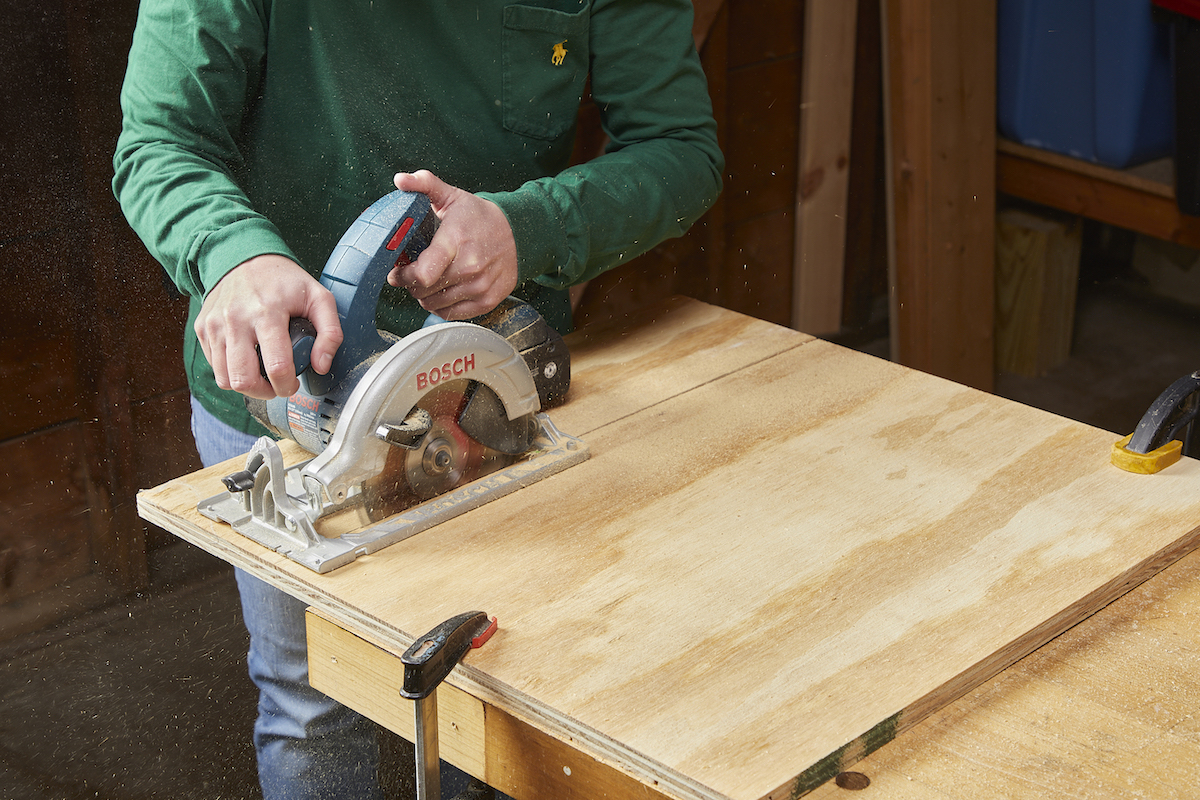
Maintaining a circular saw properly will help you get as much useful life out of the tool as possible. These tips will help you operate the tool safely for many years to come.
- Replace or sharpen blades as soon as they dull. The saw will be safer and more accurate if you do.
- For brushed motors, replace the brushes anytime the saw feels like it’s losing power. They’re generally easy to replace, and the manufacturer should be able to provide replacements.
- Dirty, sticky plates will scratch surfaces and be hard to push. Clean the bottom of the plate with bug and tar remover, pitch remover, or similar cleaning products to keep the plate gliding smoothly.
- Use compressed air to clear any accumulated dirt and sawdust from the saw. This will allow the saw to move more freely and increase air flow, resulting in better cuts.
- For worm drive saws, be sure to check the oil regularly (every three or four uses) to ensure the gears can spin smoothly and to reduce friction.
Final Thoughts
When it comes to versatility, there are many circular saw uses. While a circular saw is not as accurate as a miter or table saw, it can do the job of both in many situations. Armed with this information, anyone can learn to use these power tools safely and with enough precision to get many kinds of jobs done.


